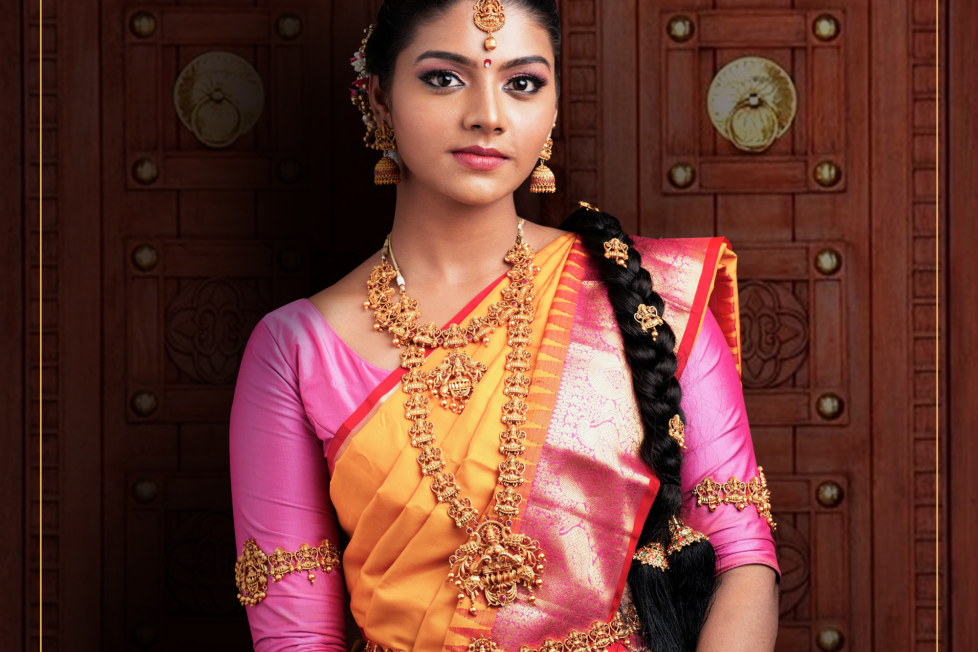The Timeless Elegance: Why Kanchipuram Sarees Reign Supreme as Bridal Attire


Introduction: When it comes to weddings in India, the bridal saree holds a position of unmatched significance. Among the myriad choices available, one particular saree stands out for its timeless elegance and cultural significance—the Kanchipuram saree. Renowned for its luxurious silk, exquisite craftsmanship, and rich heritage, the Kanchipuram saree has been the preferred choice for brides across generations. Let’s delve deeper into why this regal attire continues to captivate brides-to-be and adorn them on their most special day.
Conclusion: In the kaleidoscope of bridal sarees, the Kanchipuram saree shines as a beacon of tradition, elegance, and cultural heritage. Its allure lies not only in its exquisite craftsmanship and opulent design but also in the rich tapestry of tradition and symbolism woven into its fabric. As brides embark on the journey of matrimony, the Kanchipuram saree serves as a timeless companion, embodying the timeless beauty and grace that define Indian weddings.
DISCLAIMER: The author is solely responsible for the views expressed in this article. The author carries the responsibility for citing and/or licensing of images utilized within the text.
